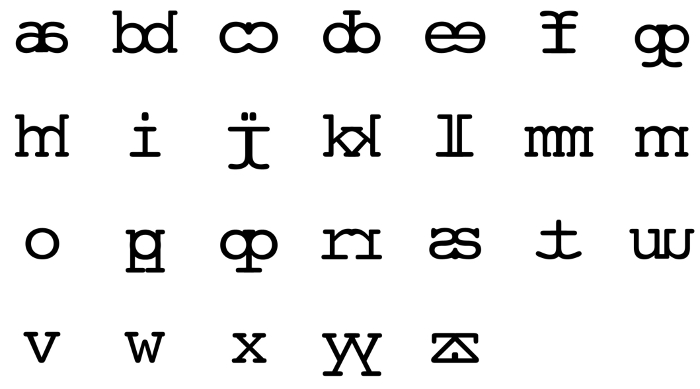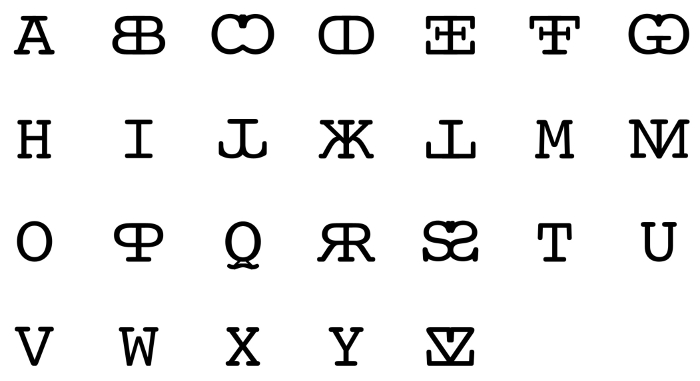| BARK BEETLE
BOOK Not a big piece of tree trunk split in half. These are the covers. Between the covers a number of leaves (pages) joined accordion-like, or leporello – the whole book can be spread and thus the text is not truncated. The bark beetle printers does not cut into pages the stories they print. Types. Quite unusual. Not only because they are so much similar to those narrow little corridors or tunnels bored by the beetles, but mainly due to one, with no doubt untypical feature, not seen in any other type-set. All signs are symmetrical (like U A T M V W H I O Y X) and can be easily linked on both sides. In the beginning it may seem somehow strange, even bizarre, but you can get used to them quite quickly. Why have these letters such feature? Why are they symmetrical? Because such script enables a two-direction reading. So, in fact, there are two different stories in this very story. Each story is written in different language, certainly. So, the bark beetle book is composed of words that can be read two-directionally (from left to right and from right to left) like: NOS <=> SON (Polish – English) or BARK <=> KRAB (English – Polish) or ARE <=> ERA (English – Polish).... Why this is like that? Maybe the point is a very special case of graphical symmetry combined with semantic non-symmetry: a reflection of something looks exactly the same as the reflected object being (meaning) at the same time something totally different. I wonder if the opposite case is possible: semantic symmetry combined with graphical non-symmetry – a reflection of something looks completely different than the reflected object being (meaning) at the same exactly the same. Does it mean that to be = to mean? Imagine: you stand in front of a mirror – you can see in it somebody who looks exactly like you but is not you. Now: you see in the mirror somebody who looks completely different than you, but is you. What a tricky and twisting story! Underbark (subcortex) stories. Luckily very short stories since the vocabulary is very limited. That's good. Otherwise we would be easily lost in those tiny labyrinths. This is the case of vertical axis symmetry (or dissymmetry) LEFT | RIGHT
and
if we add the horizontal symmetry: UP
? ---- DOWN And how about the case of centre symmetry? A symmetrical alphabet may look like that (but may be also more sophisticated):   <<< |